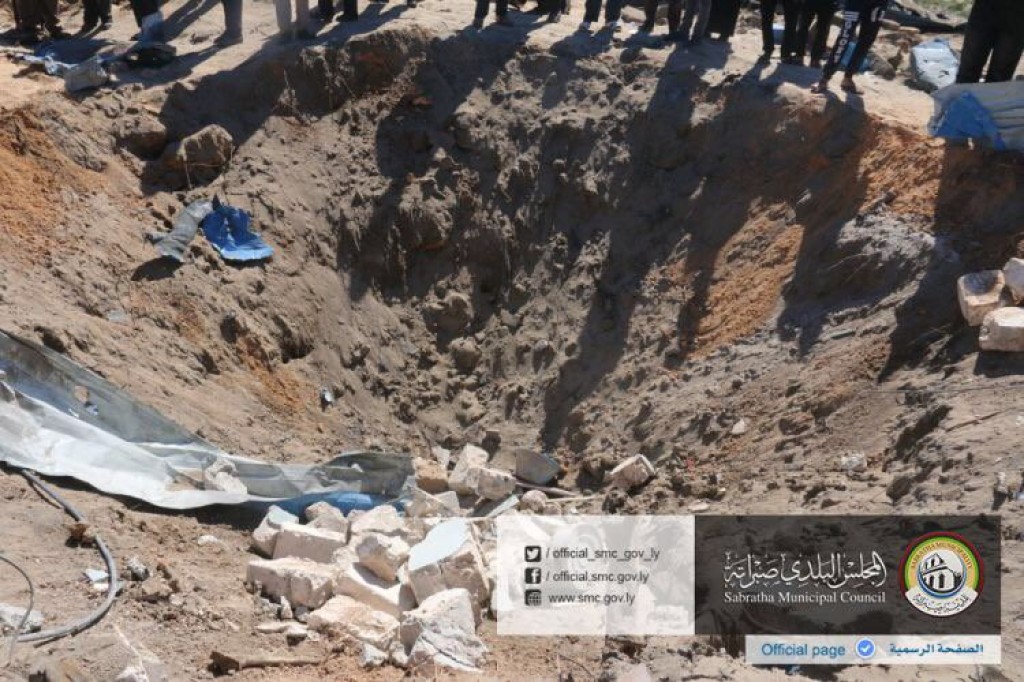
The US military launched an airstrike in Libya earlier today targeting an Islamic State “training camp near Sabratha” and a jihadist named Noureddine Chouchane, according to the Pentagon. Chouchane, a Tunisian who is also known as “Sabir,” is a “senior facilitator” for the Islamic State in Libya and “associated with the training camp.”
The Tunisian government has “named Chouchane as a suspect in the March 18, 2015, deadly attack on the Bardo Museum in Tunis.” More than 20 people, mostly foreign tourists, were killed in the assault on the Bardo Museum. There has been some confusion over who was responsible for the massacre. The Islamic State quickly claimed credit, but Tunisian authorities blamed members of the Uqba bin Nafi Battalion, which is part of al Qaeda in the Islamic Maghreb (AQIM).
If Chouchane was involved in the Bardo killings, then his role is further evidence of the Islamic State’s culpability. Chouchane may have also played a part in the July 2015 shooting spree at a beach in Sousse, Tunisia.
The Pentagon says Chouchane has “facilitated the movement of potential” Islamic State-affiliated “foreign fighters from Tunisia to Libya and onward to other countries.”
The Defense Department also suggests that Chouchane could “potentially” be involved in “planning external attacks on” American “interests in the region,” in addition to recruiting new members for Abu Bakr al Baghdadi’s global operation and “establishing bases in Libya.”
According to officials contacted by The Long War Journal, the US government has become increasingly concerned about the Islamic State’s ability to plot attacks in the West and against American interests from its base of operations on the Mediterranean coast. It is possible that Chouchane was involved in such plotting, but that has not been confirmed.
Initial reports in the aftermath of the bombing say that dozens of people were killed. The identities of those killed have not yet been verified.
The US has targeted senior leaders of both the Islamic State and al Qaeda inside Libya on several occasions since the fall of Muammar al Qaddafi’s regime in 2011.
On Nov. 13, 2015, the US killed Wissam Najm Abd Zayd al Zubaydi, also known as Abu Nabil al Anbari, in an airstrike. Zubaydi, an Iraqi national, “was a longtime al Qaeda operative and the senior ISIL [Islamic State] leader in Libya,” according to a statement by the US military. He is thought to have served as the lead executioner in the February 2015 massacre of Coptic Christians on the Libyan coast, although there is some uncertainty concerning his putative role in the murders.
The Islamic State’s so-called Libyan “province” launched an offensive in early January named after “Sheikh Abdul Mugirah al Qahtani,” which is likely one of Zubaydi’s several aliases. The operations targeted oil facilities and towns in northern Libya. [See LWJ report, Islamic State’s Libyan ‘province’ launches new offensive.]
In mid-June 2015, the US bombed a location in Libya where Mokhtar Belmokhtar, a veteran al Qaeda operative, was suspected of meeting with other jihadists. Months later, according to The Washington Post, US officials are still not certain of Belmokhtar’s fate.
Al Qaeda has, for the most part, acted as if Belmokhtar survived. Al Qaeda in the Islamic Maghreb (AQIM) issued a statement saying Belmokhtar is “alive and well.” Al Murabitoon, another al Qaeda group operating in North and West Africa at the time, also denied that he had perished and released a statement in August 2015 naming Belmokhtar as its overall emir, or leader. In December 2015, Ibrahim al Qosi, an ex-Guantanamo detainee who is now an Al Qaeda in the Arabian Peninsula (AQAP) leader, referred to Belmokhtar as if he is still alive and praised him for bringing Al Murabitoon and AQIM together in a merger.
These statements are not definitive, however, and the jihadists have not released a proof of life audio or video message from Belmokhtar himself.
American troops captured Abu Anas al Libi, who was wanted for his role in the 1998 US Embassy bombings in Kenya and Tanzania and suspected of leading al Qaeda’s network in Libya, during a raid in October 2013. Al Libi subsequently died in US custody as he was awaiting trial.







